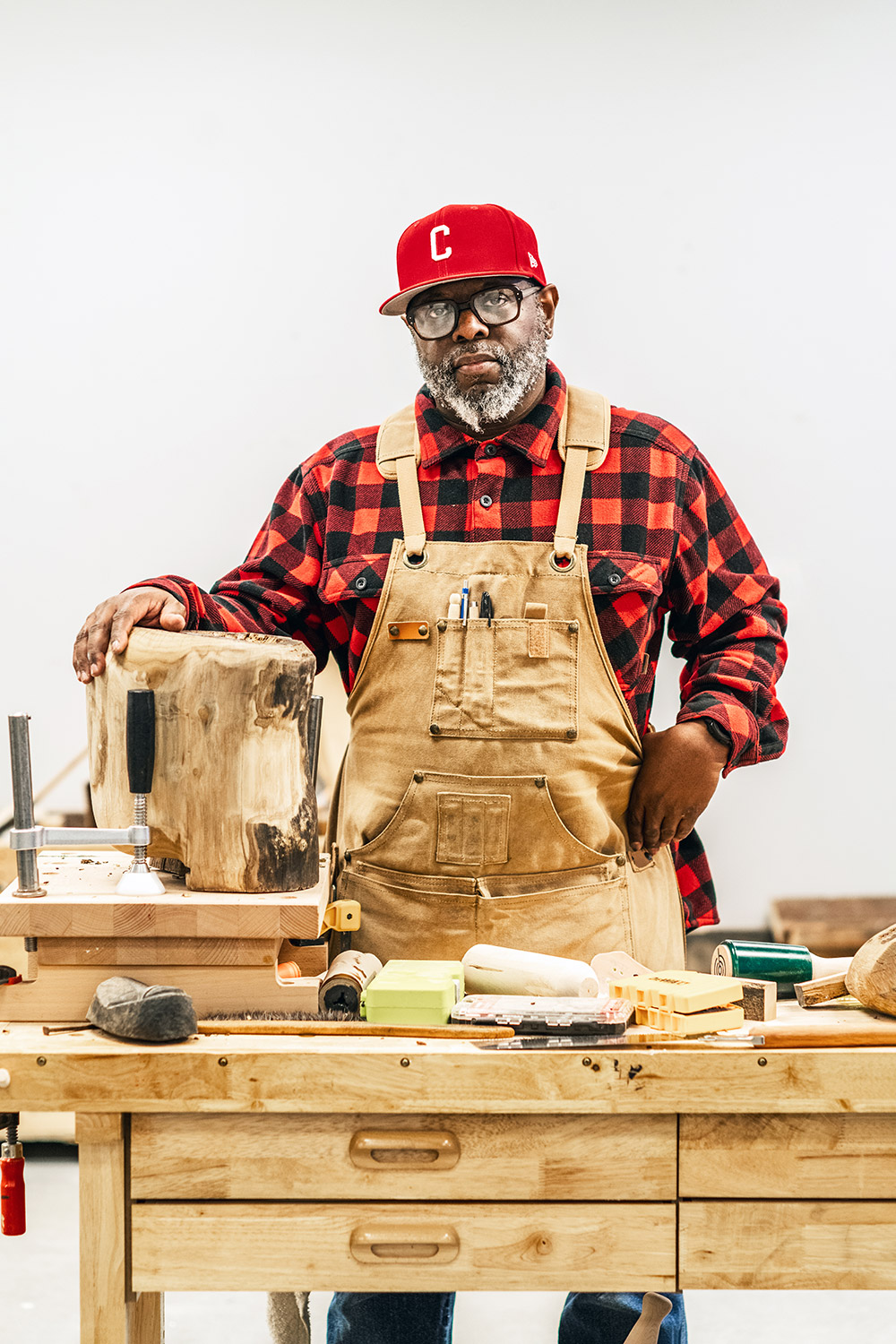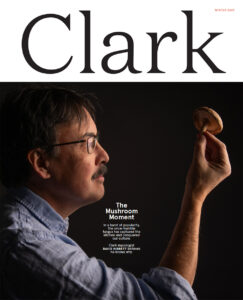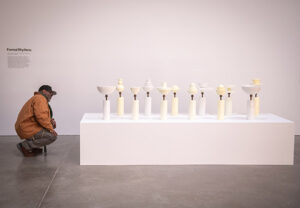Syllabus
COURSE: SCULPTURAL DYNAMICS
TEACHER: JAMES MAURELLE

In the studio art classes taught by Professor James Maurelle, students must first regard their hands and how they feel. In a digital world, regaining an appreciation for the tactile is the first step.
Maurelle, Clark’s first full-time professor of sculpture, then helps the students in his Sculptural Dynamics course transform simple materials like wood, plastic, or cardboard into storytelling vessels through the simple but profound act of making and remaking.
“I watch a sense of wonder develop in my students,” he says. “It’s such a grand privilege to see someone have ideas that they didn’t think they could have.”
You frequently work with recycled materials inside and outside the classroom. Why is that important to you?
It’s really about my mortality. I don’t believe that anything truly dies. It’s like an exercise of the inevitable, this pattern and circle of life. I have that in mind when I make materials. It’s a second, third, fourth, or fifth chance to be.

A piece of original art by sculptor and teacher James Maurelle.
You recover materials from landfills and teach Gen Z students who have grown up amid a climate crisis. Does a commitment to recycling give you hope?
I see this will to fight for change that’s amazing and beautiful. So many young folks all around the world are really doing it. Being a Generation X-er, I can appreciate that. We were the scorned generation—latchkey kids, very feral. How do you teach a new generation to care about something that my generation didn’t care about?
What projects are your students working on?
Their first project was to make anything they wanted with soap. It’s a material that is trying—not like Dove soap or something malleable you can impose your will upon. You have to listen to it. It’s exploring the senses—touch, smell.
The next project was a cardboard self-portrait. Students start by making three 12-inch by 12-inch self-portraits. They choose one of the three and recontextualize it to 3-feet by 3-feet, and then take it out into the world.
The conversations around how we see sculpture are about surface. To have an enriched or full conversation about sculpture, you have to circumnavigate the object. It’s a dance. You’re going to step on my toes, I’m going to step on your toes, but we’re going to learn this and we’re going to dance.
How do you encourage your students to take artistic risks?
What I feel confident in is that I create a space where lightning can strike and then everyone feels the radiation and the heat from that lightning strike.
The beauty of failure is perfection. I wish we lived in a society where you can fail, get back up and be supported, and then fail again and be supported again. That’s what my father would tell me. Everyone deserves a right to fail, to grow, and to develop. But also, to try hard.
The students who arrive at the beginning of this course are going to leave totally different. They’re creating, understanding, recontextualizing, and growing to know themselves. It sprays out from making objects. This is really about life.
Photographs by Steven King


